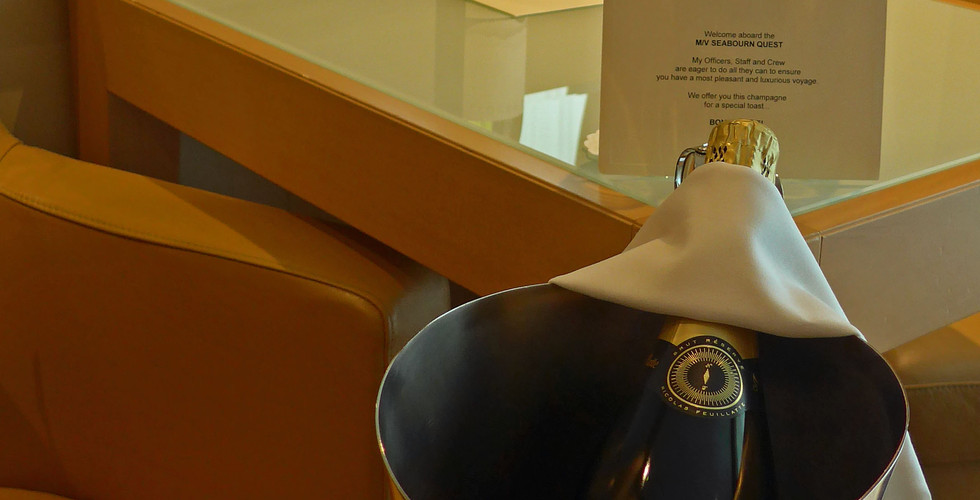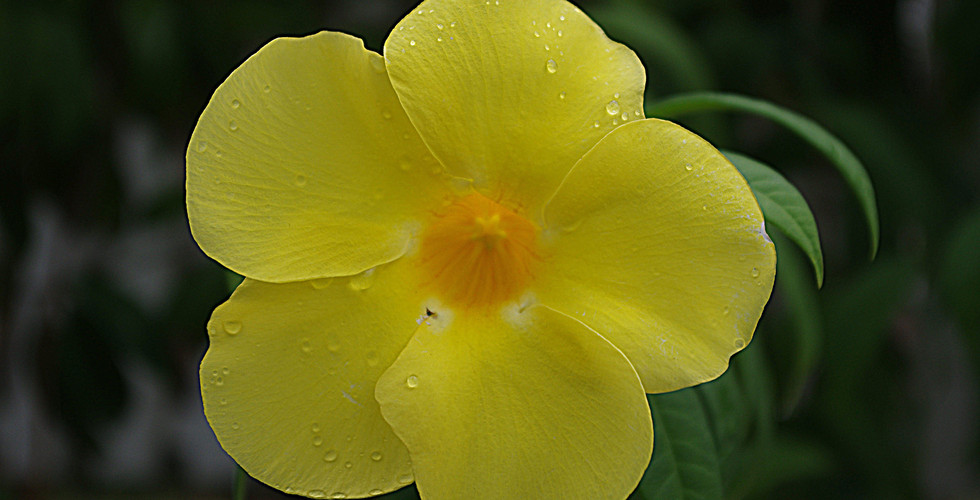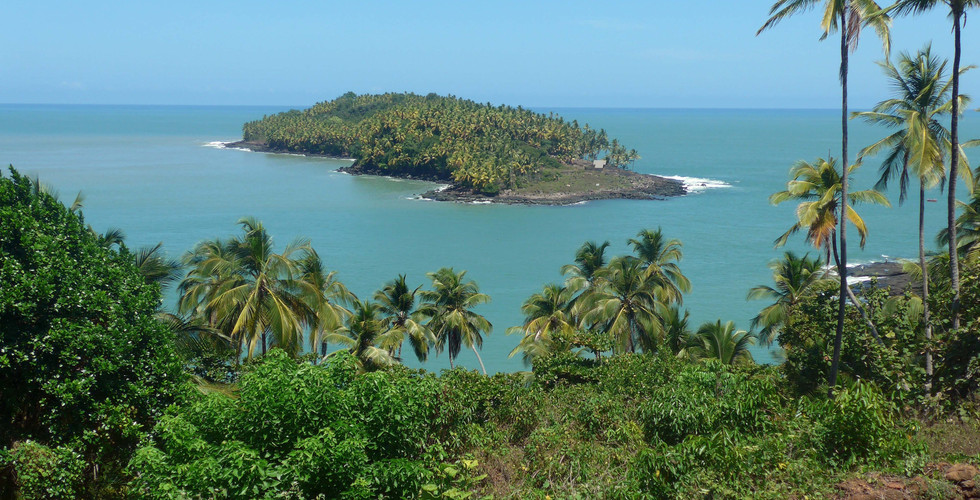Seabourn Quest: Caribbean & The Amazon
- John and Gwyn
- Dec 25, 2015
- 7 min read
Updated: Feb 27, 2023

On October 23rd we embarked on a 14 day cruise from Fort Lauderdale to Manaus on the Seabourn Quest. The itinerary took in Jost van Dyke BVI, St Barths, Terre de Haut Guadaloupe, Barbados, Devils Island French Guiana, Santarem, Parintins, & Manaus.
Jost van Dyke is all about beaches & bars! We tendered ashore & Seabourn arranged a shuttle of local taxi-buses to transport us from the dock to the nearest beach & back. Spent 1/2 day at the beach, had a drink at the Soggy Dollar Bar - home to the original 'Painkiller'. Not sure whether the drink is a cure for or the cause of pain - I suspect it's both, one was definitely enough.
St. Bart's - very popular with francophiles & celebrity spotters. On our first visit (couple of years ago) we rented a scooter & toured the island. It is built up at one end & pretty barren at the other. The beaches are OK, but then again we didn't go to the 'celebrity' beach so may have had a different opinion if we had. Aside from the topless beaches, biggest spectator sport seems to be watching the planes take off & land at the very tiny airport. This time we wandered around the main town - it was extremely hot so walked to the nearest beach - pebbles not sand - and had a dip - strong undertow & very soft underfoot so found it difficult to get out.
Terre de Haut, Guadaloupe. One of the Iles des Saintes, we were very excited to visit as that is (one of the places) where they filmed Death in Paradise. We weren't the only ones in search of the police station & the bar in the program - unfortunately, we were all on the wrong island! Nevertheless, and despite the fact that it was pouring down, we enjoyed our visit there. We hiked up the hill to Fort Napoleon - forgot to take Euros & the Euro/US$ exchange rate was stuck in a timewarp - entry fee was 2 euros or US$7 & to add insult to injury we got there at 11:30 and after we'd paid they told us it closed at 12:30. But to be fair, if we hadn't sheltered from the rain for 30 minutes, we would have been around it & out well before closing time. Walked back down & through the town and watched the locals waiting for the main island ferry to be offloaded. One old fella had clearly been waiting for a single 1/2 gallon can of paint which he clutched while riding pillion. It put into context the bare shelves in the local corner shop that we had passed earlier. Visited the cemetery - where they had found a novel use for the local shells. Then back to the ship for late lunch & pina coladas!
Barbados. Once again extremely hot. Not feeling too sharp that day and couldn't face a taxi ride, so took walk into Bridgetown, which looked interesting on the tourist map - but sadly did not live up to expectations. It was not a place I would want to walk around at night. To call it rundown would be an understatment. The cathedral appeared to be held up by scaffolding, and the many betting shops were doing good business. But, the lasting impression is of the music that seemed to be coming from everywhere. One guy had parked his SUV at the side of the street with doors open to the pavement & music blasting from the speakers that took up the entire rear seat. I guess he didn't have a big family.
Devils Island, French Guiana. Ile du Diable is one of the three Iles du Salut - the Salvation Islands - a French penal colony from 1852 until its closure in 1953, during which time some 80,000 inmates died of disease, maltreatment or the guillotine. It was featured in the book Papillon (& movie of same name), a memoir of Henri Charriere, a former inmate who escaped. It's a bit misleading of the cruise line as no one is allowed to land on Devils Island. We tendered ashore to Ile Royale, the largest of the three islands (the third is Ile Saint-Joseph) and administration center for the colony. Several structures are still standing although mostly ruins, but enough to get a feel for what the place must have looked like in it's heyday. Prominent buildings include the church, hospital, and commissioners house (which has been restored & houses a museum). The prison still displays the hand & foot shackles that were used to hold the prisoners & it is not difficult to imagine prisoners going mad in solitary confinement. Papillon counted 8 steps across his cell in the movie - I could only manage 5, and small ones at that. From Ile Royale one can look across a narrow stretch of sparkling blue water to Il du Diable (it looked a lot further in the movie). Some of the buildings have been converted to tourist accommodation and the islands receive some 50,000 visitors annually.
Santarem, Brazil. The 3rd largest city along the Amazon with approx. 300,000 inhabitants. Seabourn describes Santarem as "a busy little port thronged with fishing boats and dugout canoes, at the junction where the green waters of the Tapajos River mingle with the yellowish Amazon". As idyllic as that may sound, if our day was typical, Santarem is a bustling, crowded place with heavy traffic & not a comfortable place to stroll around. The ship docked at the port on the outskirts of the city (next to the Cargill Soybean plant) & a shuttle bus was provided to the city centre. We had been told that some merchants would not accept US$ so, as it was our first stop in Brazil we took the opportunity to get some local currency (the Brazillian Real) from an ATM. Maybe it was because it was lunchtime on a Friday (payday?) but the banks were mobbed & not being sure of the exchange rate this became more of an adventure than it should have been. We did however complete the task. But as we later discovered most merchants preferred US$, and we ended up 'getting rid' of our reals at the Manaus airport on our departure. Some of our fellow passengers took the ship tour to Alter do Chao which received mixed reviews.
Parintins, Brazil. A small island settlement (of approx 60,000), Parintins is famed for the annual Boi Bumba festival at the end of June. It is the second largest annual festival in Brazil (behind the Rio Carnival) and teams from as far away as Manaus come to compete. Two teams, red and blue, compete through music & dance, in the telling of a local legend. Our arrival was obviously a big deal and appeared to be greeted by the entire town, with school children lining the walkway from the ship to the terminal, and streets closed off for local craft stalls. We were treated to a special Boi Bumba performance in the convention center, which with its loud music & colourful costumes, turned out to be a highlight of the trip. Parintins other 'claim to fame' is that it is the only place where Coca Cola ads are blue and in 2011 special cans were produced half red & half blue representing the two colours of the Boi Bumba teams.
Manaus, Brazil. 1,000 miles from the sea, Manaus, a modern, high rise city of 1.8 million inhabitants, is the largest city on the Amazon (it is actually on the Rio Negro). Manaus grew out of the rubber boom & in its heyday Manaus had electric lighting & a tram network when most European cities were still under gaslight. The golden days ended in the early 20th century when rubber production shifted to Malaysia. In 1876 rubber plant seeds were smuggled out by Henry Whickham, an Englishman, cultivated in Kew Gardens then replanted in Malaysian plantations - providing for more efficient rubber collection than the wild Amazon jungle. By 1912 the Brazilian rubber trade was all but finished. Manaus was industrialised in the 1960's and began to flourish again, occupying a crossroads of air, river & road routes through the Amazon. It exemplifies the best & worst of modern Brazil: smart pedestrian shopping precincts, modern hotels & old world colonial mansions sit alongside the favelas (shanty towns). Opened in 1896, the Teatro Amazonas (opera house) is perhaps the best known landmark. Every part of the building was imported from Europe - the cast iron & steel structure from Scotland & England, the marble from Italy, tiles for the dome from Alsace, and interior furnishings from France.
Before leaving home we had arranged (through toursbylocals) a tour of Manaus and the meeting of the waters. Our guide, Tiago, met us as we got off the port shuttle bus and drove us into the city where (after instructing us to watch our valuables) we embarked on a walking tour through the local fruit, meat & fish markets. We then walked down to the river for a boat ride to the meeting of the waters (where the Rio Negro flows into the Amazon). Instructing us to put our hand in the water, the boat crossed the meeting of the waters. The contrast between the warm black water of the Rio Negro and the cold brown silty water of the Amazon was quite startling. Our tour was to include a visit to a floating village and the giant water lilies, however, the water level in the amazon can vary by 30 meters and our visit coincided with a low point. As a result the tributaries were dry & the 'floating houses' were sitting on the river beds. As a result we had spare time so Tiago took us round the Teatro Amazonas, and to parts of the city that we would not otherwise have visited. Tiago was excellent, very knowledgeable, and passionate about his home and its people. Although not enamoured with our cruise up the Amazon, I could be tempted to return & accompany Tiago on a guided trip upriver into the Amazon 'proper'.


















































Comments